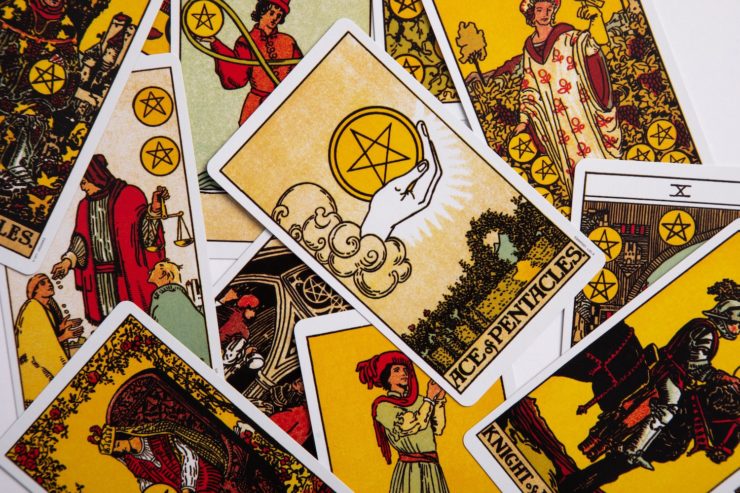The tarot’s history as a tool of divination goes back to the late eighteenth century, and its use as a deck of playing cards goes back centuries further; it’s no surprise that genre writers have repeatedly incorporated tarot and tarot analogs into their works. Although there’s a lot of fun in characters consulting a fortune teller or a diviner offering crucial insight at a key juncture, some writers have gone deeper. Here are five works of genre fiction that incorporate the tarot or a tarot analog into the worldbuilding of their novels.
Aspects by John M. Ford
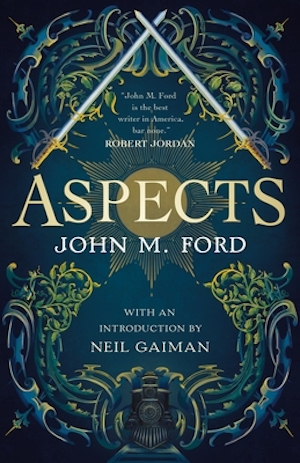
The world of Ford’s final, unfinished novel reveres Goddess instead of God, and She is said to have four aspects and four companions (who are actually part of Her). Only gradually does it become clear that the holy Book of this religion is a 78-card divinatory deck: saying grace, at mealtimes and at partings, involves shuffling a deck and drawing two cards, leaving those assembled to figure out their meaning and how it relates to them.
Probably unintentionally, reading Aspects requires readers to undertake similar interpretation work. As it stands, the novel follows the Coron Varic, a reformist member of the Republic of Lescoray’s upper house of Parliament, as he prepares for a country vacation in the company of his circle of friends. He invites his new love interest, the Coron Longlight, along on impulse, and the novel follows the guests’ sojourn at the house and then accompanies them on their various ways, mostly by train, after it ends. Do Varic and his ally Brook have enemies working against them? Will Longlight extend the railway into her demesne? Will the great national exhibition that is proposed towards the end of the manuscript happen? Ford left only a series of sonnets as signals along the track.
Thus there are two levels in play when the new Archimage Birch, one of the guests at the house, declares in a sermon that “The first thing the Book teaches is that meanings must be found and interpreted.” Like the tarot, the cards of the Book have four suits, and I suspect that may have related to Ford’s planned structure for the series; the four elements and the four seasons are also involved in magic in Lescoray. Even unfinished, Aspects is a masterpiece worth figuring out for yourself.
Nova by Samuel R. Delany
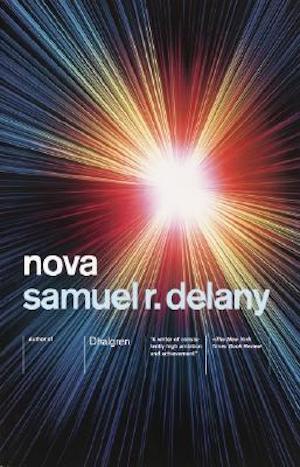
Nominated for the Hugo Award for Best Novel, this is one of Delany’s best and most readable books. Set in the year 3172, the novel follows Lorq Von Ray’s quest to secure a supply of the power source Illyrion. This will allow him to win his feud with his arch-nemesis, and therefore shift the galactic balance of power away from Earth and towards younger political entities like Von Ray’s own Pleiades Federation. Nova is immensely clever on multiple levels, one of them being that it is a classic Grail Quest narrative—and what’s more, characters in the book are aware of it, discussing in the text about how to thwart the supposed fatal curse that falls upon those who finish their Quest tales.
In Delany’s space opera, tarot has become a mainstay of galactic society: the cards are not only widely used for games, as they are in parts of Europe today, but readings are also extremely common and considered scientific. As the would-be novelist Katin tells the Mouse, a skeptic, “…the cards don’t actually predict anything. They simply propagate an educated commentary on present situations—” Astute readers will realize that these remarks describe Lorq’s entire journey, but relating the reading to the plot is part of the enjoyment.
The Elemental Logic series by Laurie J. Marks
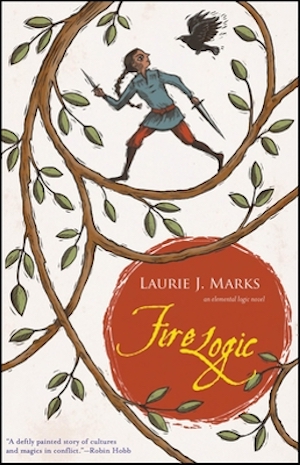
Marks’ four-volume series is set in the country of Shaftal, where individuals whose nature is dominated by one of the four elements are known as elemental witches. As the narrative opens, the ruler of the realm, an earth witch, dies, and the country is overrun by the invading Sainnites. A dozen years later, some Shaftali insurgents and Sainnite soldiers alike are starting to think about giving up the fight. One fire blood in particular, Zanja na’Tarwein, has an incomplete deck of traditional glyph cards, which she uses to help clarify her own intuition and that of her fellow fire bloods.
The glyph cards are important aside from card readings; a plotline in Water Logic revolves around Zanja recovering a formerly lost, complete set of the cards, which reveals that the Shaftali themselves were once invaders, displacing indigenous tribes like Zanja’s and forcing them to the borderlands centuries before. This revelation points to the central tension of the story: how to find a balance between Shaftali, Sainnites, and tribes in a way that acknowledges the harms of the past but enables everyone to move forward together? While you’re reading, you can find out your own elemental balance on Marks’ website.
Murder Must Advertise by Dorothy L. Sayers
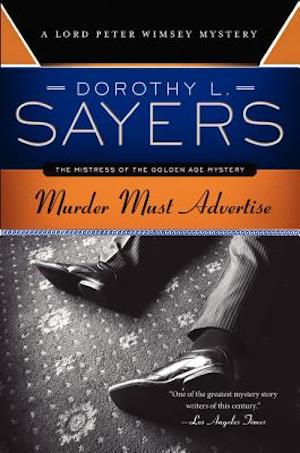
Tarot does not appear directly in the narrative, but some of the major arcana resonate both with the novel’s themes and the themes of the series overall. Sayers’ eighth Lord Peter Wimsey mystery is based on her experiences working in the advertising industry: to catch a murderer, Peter spends almost the whole book undercover, working in an advertising office as Death Bredon. During his investigation, he repeatedly encounters a dissolute group of “bright young things” led by the aristocratic Dian de Momerie, who is usually high out of her mind.
Dian’s ravings about seeing a “hanged man” behind Peter point to the major arcana: she herself can be taken as the Moon, while Peter—in costume as the Harlequin—resonates with the Fool, the protagonist of the major arcana as well as of the novel. On top of that, Peter is closely associated with three cards that follow each other in many decks: Justice, the Hanged Man, and Death. I’ll leave most of these interpretations as an exercise for the reader, but it’s worth nothing that among other things the Hanged Man recalls Wodan, who hung on the tree for nine days and nights, just as Peter takes nine books to become a man in full before he is ready to meet Harriet Vane as an equal in the tenth, Gaudy Night.
The Mask of Mirrors and The Liar’s Knot by M.A. Carrick
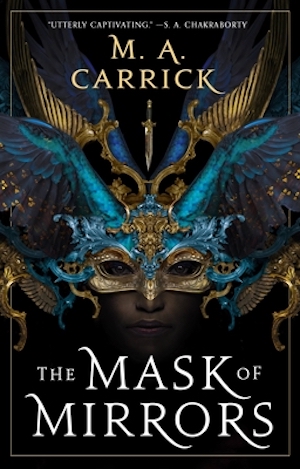
The first two volumes of this trilogy were both published last year, and they’re some of the most swashbuckling fun I’ve had in fantasy recently. Set in the city-state of Nadežra, which was conquered by the Liganti centuries ago, dispossessing its Vraszenian natives, con artist Ren finds herself caught between multiple worlds and roles when she sets out to insinuate herself into the failing noble House Traementis. Along the way, her path tangles with the centuries-old outlaw the Rook, and they learn that Nadežra is still being choked by an ancient danger.
One of Ren’s best weapons is her skill with pattern: she is a true szorsa, a reader of the sixty-card pattern deck that is a key element of Vraszenian culture and religion, and her abilities prove crucial to unraveling the web she and Nadežra are caught in. Furthermore, the titles of each book and each chapter are all those of pattern cards, and the authors even drew actual card readings that they incorporated into the narrative. While you’re waiting for Labyrinth’s Heart, which is scheduled for 2023, you can read more about pattern and draw your own reading.
***
Let me know your picks that got left out in the comments.
Electra Pritchett is a lapsed historian who splits her time between reading, research, and her obsession with birds and parfait. Born in New Jersey, she has lived on three continents and her studies have ranged from ancient Rome to modern Japan.










